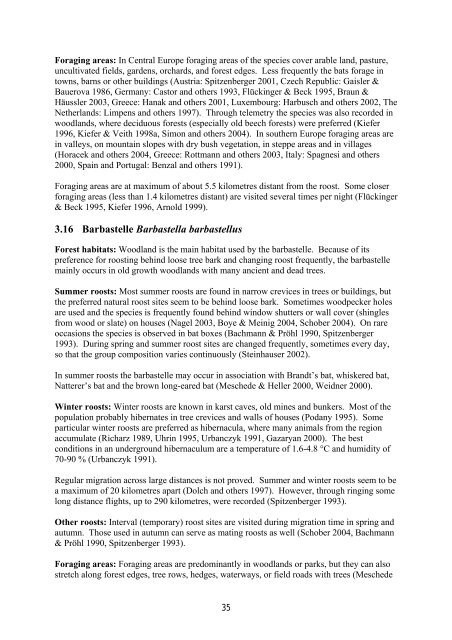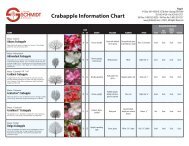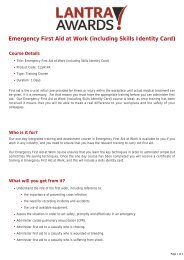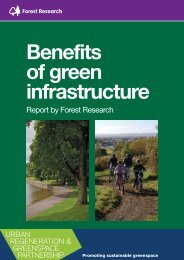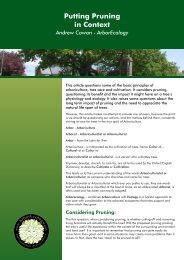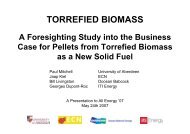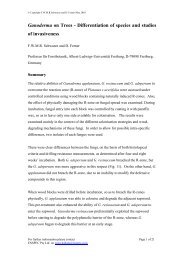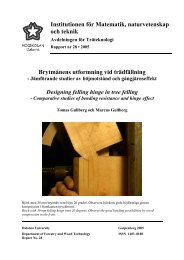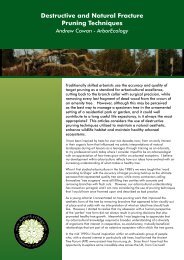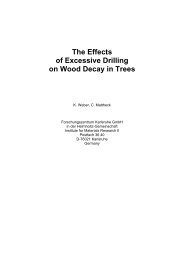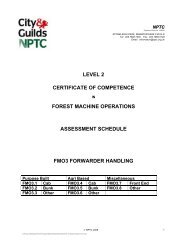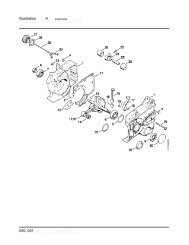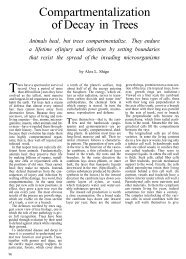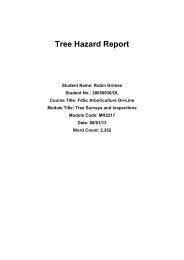working today for nature tomorrow - Justus-Liebig-Universität GieÃen
working today for nature tomorrow - Justus-Liebig-Universität GieÃen
working today for nature tomorrow - Justus-Liebig-Universität GieÃen
- No tags were found...
Create successful ePaper yourself
Turn your PDF publications into a flip-book with our unique Google optimized e-Paper software.
Foraging areas: In Central Europe <strong>for</strong>aging areas of the species cover arable land, pasture,uncultivated fields, gardens, orchards, and <strong>for</strong>est edges. Less frequently the bats <strong>for</strong>age intowns, barns or other buildings (Austria: Spitzenberger 2001, Czech Republic: Gaisler &Bauerova 1986, Germany: Castor and others 1993, Flückinger & Beck 1995, Braun &Häussler 2003, Greece: Hanak and others 2001, Luxembourg: Harbusch and others 2002, TheNetherlands: Limpens and others 1997). Through telemetry the species was also recorded inwoodlands, where deciduous <strong>for</strong>ests (especially old beech <strong>for</strong>ests) were preferred (Kiefer1996, Kiefer & Veith 1998a, Simon and others 2004). In southern Europe <strong>for</strong>aging areas arein valleys, on mountain slopes with dry bush vegetation, in steppe areas and in villages(Horacek and others 2004, Greece: Rottmann and others 2003, Italy: Spagnesi and others2000, Spain and Portugal: Benzal and others 1991).Foraging areas are at maximum of about 5.5 kilometres distant from the roost. Some closer<strong>for</strong>aging areas (less than 1.4 kilometres distant) are visited several times per night (Flückinger& Beck 1995, Kiefer 1996, Arnold 1999).3.16 Barbastelle Barbastella barbastellusForest habitats: Woodland is the main habitat used by the barbastelle. Because of itspreference <strong>for</strong> roosting behind loose tree bark and changing roost frequently, the barbastellemainly occurs in old growth woodlands with many ancient and dead trees.Summer roosts: Most summer roosts are found in narrow crevices in trees or buildings, butthe preferred natural roost sites seem to be behind loose bark. Sometimes woodpecker holesare used and the species is frequently found behind window shutters or wall cover (shinglesfrom wood or slate) on houses (Nagel 2003, Boye & Meinig 2004, Schober 2004). On rareoccasions the species is observed in bat boxes (Bachmann & Pröhl 1990, Spitzenberger1993). During spring and summer roost sites are changed frequently, sometimes every day,so that the group composition varies continuously (Steinhauser 2002).In summer roosts the barbastelle may occur in association with Brandt’s bat, whiskered bat,Natterer’s bat and the brown long-eared bat (Meschede & Heller 2000, Weidner 2000).Winter roosts: Winter roosts are known in karst caves, old mines and bunkers. Most of thepopulation probably hibernates in tree crevices and walls of houses (Podany 1995). Someparticular winter roosts are preferred as hibernacula, where many animals from the regionaccumulate (Richarz 1989, Uhrin 1995, Urbanczyk 1991, Gazaryan 2000). The bestconditions in an underground hibernaculum are a temperature of 1.6-4.8 °C and humidity of70-90 % (Urbanczyk 1991).Regular migration across large distances is not proved. Summer and winter roosts seem to bea maximum of 20 kilometres apart (Dolch and others 1997). However, through ringing somelong distance flights, up to 290 kilometres, were recorded (Spitzenberger 1993).Other roosts: Interval (temporary) roost sites are visited during migration time in spring andautumn. Those used in autumn can serve as mating roosts as well (Schober 2004, Bachmann& Pröhl 1990, Spitzenberger 1993).Foraging areas: Foraging areas are predominantly in woodlands or parks, but they can alsostretch along <strong>for</strong>est edges, tree rows, hedges, waterways, or field roads with trees (Meschede35


